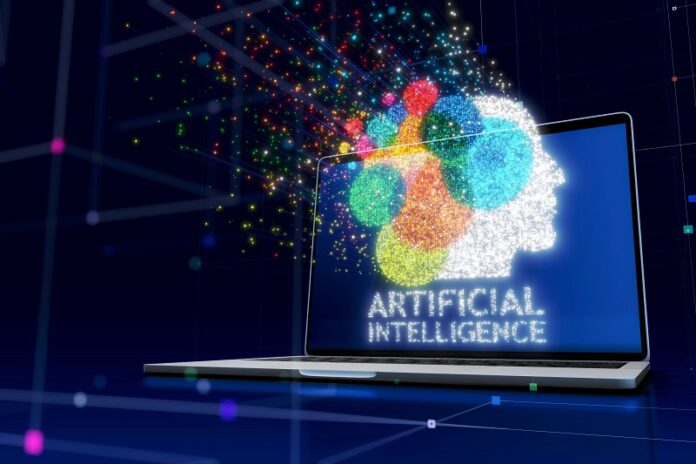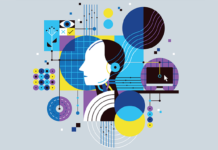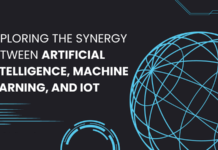Generative AI is the technology that enables machines to produce original and creative outputs, such as images, texts, and sounds. It utilizes deep learning models like generative adversarial networks (GANs) and variational autoencoders (VAEs) to mimic and replicate human-like outputs. This technology has gained tremendous traction recently due to its remarkable capabilities.
The field of generative AI has witnessed exponential growth thanks to breakthroughs in deep learning and computational power. Researchers and developers have made tremendous strides in improving generative AI models’ quality, speed, and diversity. For instance, OpenAI’s GPT-4 model, with over 170 trillion parameters, has astounded the world with its ability to generate contextually relevant text. These advancements have paved the way for various exciting applications across industries.
Generative AI in Numbers:
- A recent study projects that the global generative AI market will reach $51.8 billion by 2028, growing at a CAGR of 35.6%.
- Marketers predict that the adoption of generative AI in the healthcare industry will reach $102.7 billion by 2028 from $14.6 billion in 2023.
- By 2025, experts estimate that over 90% of online content will be generated by AI technologies like generative AI.
Top 10 Generative AI Applications
This section delves into the fascinating world of generative AI and explores its significant impact on different industries.
Application 1: Content Generation
Generative AI is revolutionizing content creation by automating the generation of articles, product descriptions, social media posts, and more. This technology can alleviate the burden of manual content creation, providing businesses with cost-effective and time-efficient solutions. By leveraging generative AI, companies can ensure a consistent flow of engaging and high-quality content.
For instance, news organizations can utilize generative AI algorithms to generate news articles based on real-time data automatically. E-commerce platforms can employ generative AI to create unique product descriptions tailored to individual items. Social media managers can save time using generative AI to generate catchy and attention-grabbing posts.
Application 2: Image and Video Synthesis
Generative AI also transforms how users create images and videos, generating highly realistic visual content. This technology finds applications in games, entertainment, video editor companies and various other industries where captivating visual content is crucial.
With generative AI, game developers can automatically generate vast, diverse virtual worlds with realistic characters and environments. Video editor companies can use this technology to integrate AI features to create visually stunning video templates. Producers can use generative AI to produce lifelike special effects and generate entire scenes or episodes in the entertainment industry. By harnessing generative AI for image and video synthesis, enterprises can unlock new levels of creativity and realism.
Application 3: Voice and Speech Generation
The advancements in generative AI have paved the way for synthesizing human-like voices, enabling applications in various industries. Businesses can provide more personalized and engaging customer interactions by leveraging generative AI.
Virtual assistants, powered by generative AI, can simulate human-like conversations, making interactions more natural and intuitive. Customer service systems can employ generative AI to automate call centre operations, providing efficient and personalized support. In the voice-over industry, AI can create high-quality voice recordings and convert audio files, e.g. M4A to MP3.
Application 4: Creative Design
Generative AI revolutionizes creative design tasks, empowering designers and artists with innovative tools and possibilities. From logo generation to graphic design and fashion design, generative AI transforms visual content.
Designers can utilize generative AI algorithms to automatically generate unique and visually appealing logos, saving time and providing inspiration. Graphic designers can leverage generative AI to create new design elements, enabling them to explore creative avenues more efficiently. In the fashion industry, generative AI algorithms can assist in creating unique and personalized designs based on individual preferences.
Designers can push boundaries, discover novel aesthetics, and streamline workflows by augmenting the creative process with generative AI.
Application 5: Personalized Recommendations
Generative AI is pivotal in personalized recommendations, helping businesses deliver tailored customer experiences. In e-commerce or streaming platforms, generative AI algorithms can analyze vast data to provide customized suggestions.
E-commerce platforms leverage generative AI to offer product recommendations based on user preferences, browsing history, and purchase patterns. Streaming media utilize generative AI to suggest relevant movies, TV shows, and music based on individual tastes. In personalized marketing, generative AI algorithms enable targeted advertising and content recommendations to improve conversion rates.
Application 6: Healthcare and Medical Imaging
Generative AI is making significant strides in healthcare, particularly in medical image analysis and diagnosis. By analyzing medical images such as X-rays, CT scans, and MRIs, generative AI algorithms can assist healthcare professionals in accurate and timely diagnoses.
Radiologists and pathologists can utilize generative AI to enhance their ability to detect abnormalities, tumours, and other medical conditions. Moreover, generative AI algorithms can assist doctors in personalizing medicine by recommending individualized therapies based on patient data.
Integrating generative AI in healthcare improves diagnostic accuracy and reduces the resources associated with medical image analysis. By augmenting healthcare professionals’ expertise, generative AI has the potential to innovate patient care and outcomes.
Application 7: Financial Modeling and Forecasting
Generative AI has found applications in financial modelling and forecasting, assisting investment banking, risk assessment, and trading activities. Generative AI algorithms can provide valuable insights, improve accuracy, and optimize decision-making processes by analyzing vast amounts of financial data.
Investment banks can leverage generative AI to analyze market trends, identify investment opportunities, and make informed decisions. Risk assessment models powered by generative AI can predict and mitigate risks, reducing the likelihood of financial losses. Traders can utilize generative AI algorithms to forecast stock prices and optimize trading strategies.
Integrating generative AI in financial modelling and forecasting empowers financial institutions with enhanced analytical capabilities. It enables them to navigate complex markets more efficiently.
Application 8: Virtual Reality and Augmented Reality
Generative AI is revolutionizing the virtual reality (VR) and augmented reality (AR) experiences by enhancing realism and interactivity. By generating immersive environments and realistic simulations, generative AI algorithms enable more engaging and lifelike experiences.
In gaming, generative AI can automatically create vast, diverse virtual worlds with realistic characters, landscapes, and objects. Training simulations in various industries can leverage generative AI to replicate real-life scenarios and improve learning outcomes. In architectural visualization, generative AI algorithms can generate realistic 3D models and simulations, aiding architects and designers in visualizing their creations.
Application 9: Natural Language Processing
Generative AI has significantly advanced natural language processing (NLP), enabling machines to understand and generate human-like text. It has found applications in chatbots, language translation, and speech-to-text systems.
Chatbots powered by generative AI can engage in natural and meaningful conversations with users, providing automated assistance and support. Language translation services utilize generative AI algorithms to deliver more accurate and contextually relevant translations. Audio joiner and editor companies can integrate speech-to-text systems to synthesize text from audio files and create transcripts.
Generative AI’s progress in NLP enhances communication capabilities, breaks language barriers, and enables more intuitive interactions between humans and machines.
Application 10: Autonomous Systems
Generative AI enables autonomous systems, such as self-driving cars, drones, and industrial automation. Its algorithms allow machines to operate autonomously in dynamic environments by analyzing real-time data and making complex decisions.
Self-driving cars leverage generative AI to perceive and interpret their surroundings, making intelligent decisions to navigate safely and efficiently. Drones with generative AI algorithms can autonomously perform complex tasks, such as search and rescue missions or aerial inspections. Industrial automation systems utilize generative AI to optimize processes, enhance efficiency, and reduce human intervention.
Final Thoughts
Generative AI is reshaping industries in 2023, revolutionizing;
- content generation
- image and video synthesis
- voice and speech generation
- creative design
- personalized recommendations
- healthcare and medical imaging
- financial modelling and forecasting
- virtual reality and augmented reality
- natural language processing
- autonomous systems
Rapid breakthroughs in generative AI and its revolutionary potential provide organizations unparalleled opportunities to increase efficiency and promote innovation. As we embrace and explore generative AI, navigating ethical considerations and ensuring responsible use is crucial. By harnessing the power of generative AI, industries can unlock new levels of productivity, creativity, and success in the years to come.








